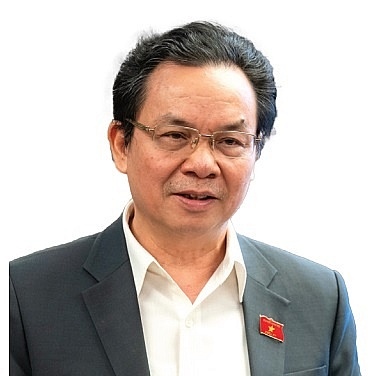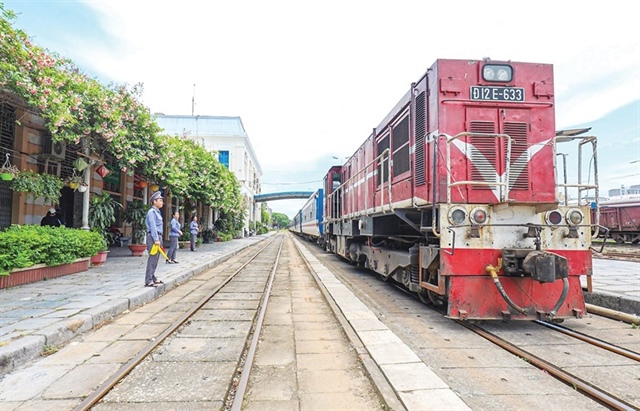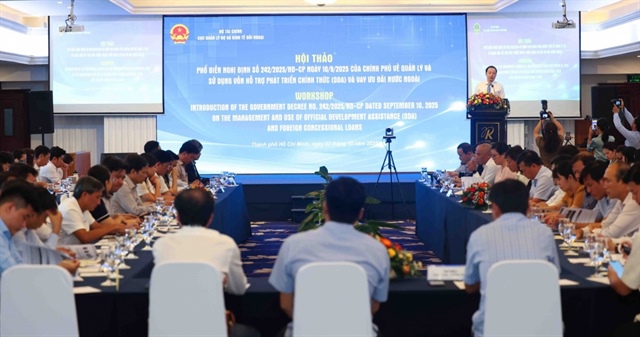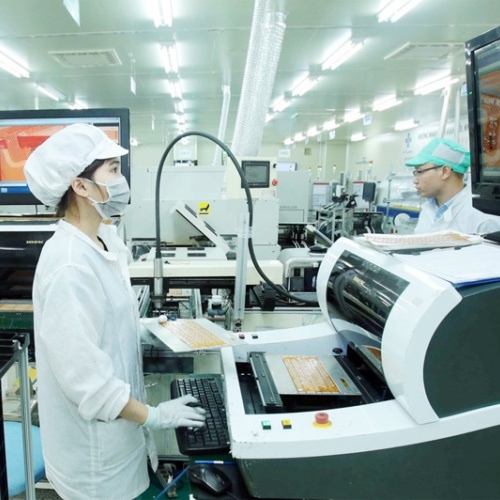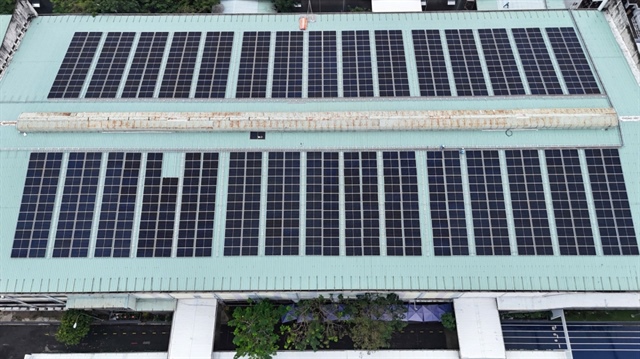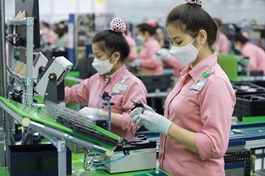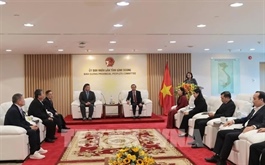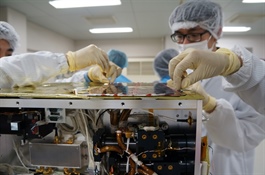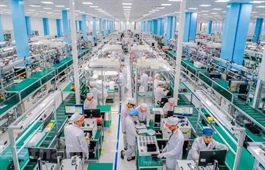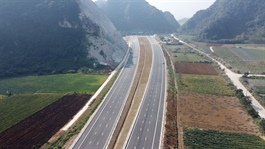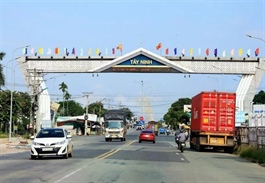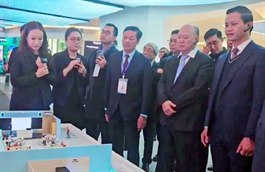Funding policy takes shape for new railway
Funding policy takes shape for new railway
Vietnam’s construction of a modern railway in the north will not affect the country’s public debt safety, but will offer special incentives.
The National Assembly (NA) last week adopted a resolution on the investment policy for a railway from Lao Cai to Haiphong, which would pass through Hanoi, worth an initial sum of $8.37 billion.
According to a governmental report, capital from this initiative will come from the state budget, with the Ministry of Transport’s (MoT) medium-term public investment in 2021-2025 at $5.12 million.
The cost will be $6.23 billion for 2026-2030, and $1.56 billion for 2031-2035.
This $8.37 billion investment will include more than $1.33 billion for site clearance and resettlement; $4.4 billion for construction; $478 million for equipment and means; $585 million for management, consultancy, and other costs; and over $1.23 billion for provision. The investment capital will be nearly $16 million per kilometre.
The NA currently considers and decides on the investment policy based on the ability to balance capital, assess the impact on the state budget deficit and ensure public debt safety. Since this is a special priority initiative, the government will consider submitting it to the NA for decision in the medium-term public investment plan and the five-year financial to ensure macroeconomic balance and national public debt safety.
In addition, the government has also proposed to supplement a number of specific policies to the NA, including the proposal to decide on the use of government bond capital, official development assistance (ODA), foreign preferential loans, and other legal domestic capital sources.
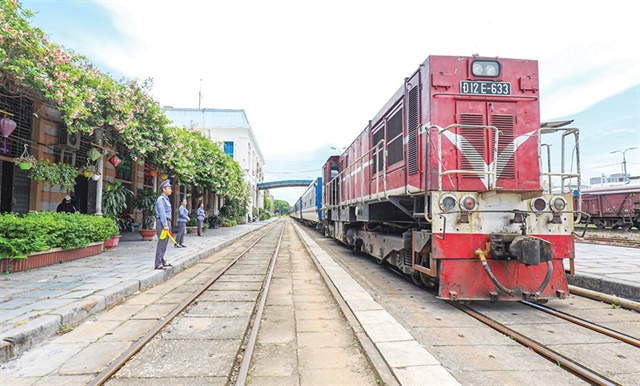
The railway to transform the north will likely cost over $8 billion, Photo: E-portal of the Ministry of Transport |
According to the MoT, the railway will not have a big impact on public debt safety.
At present, the country’s public debt is gradually decreasing, from 61.4 per cent of GDP to 55.9 per cent of GDP in 2020 and to 37 per cent of GDP in 2024, ensuring the safety of such debt within the cap of 60 per cent allowed by the NA.
With GDP of $476.3 billion in 2024, the public debt cap must not exceed 55 per cent of GDP as a warning level stipulated by the NA, and it is likely that the government will be able to mobilise $77.4 billion for public debt. It is forecasted that by 2027, GDP will continue increasing, so the public debt ratio will decrease.
In addition, the total public investment for new expressway projects starting construction in 2021-2025 and put into operation from 2026, was about $18 billion.
“If this capital is reserved for investing in high-speed North-South railway and the Lao Cai-Haiphong railway, it will meet demand, not to mention expand GDP growth,” the MoT stated.
When it comes to special incentives and mechanisms for the Lao Cai to Haiphong railway, the government is allowed to issue government bonds to supplement the annual budget and public investment plan for the venture if the annual state budget estimate fails to meet the disbursement plan.
The government is also permitted to use ODA capital and foreign concessional loans to carry out the project without having to prepare a proposal. Regulations of the foreign sponsor are to be applied where Vietnamese law does not have such regulations or has regulations which are different from those of the foreign sponsor.
In addition, the government can use increased revenue and savings of the annual central budget (if any) and other legal sources of capital for the railway if the annual state budget does not meet the disbursement progress. The use of increased revenue and savings of expenditure shall not be subject to the order of priority as prescribed by the state budget law.
Furthermore, the venture can be invested with capital from legal domestic sources if the loan agreement negotiation with foreign partners is unsuccessful or the loan size is not as expected.
According to the governmental report, regarding technological development for the railway, organisations and individuals participating in scientific and technological activities serving railway development are entitled to decide on limited bidding, contractor appointment, and select contractors providing services and goods.
Participating enterprises are also entitled to incentives as high-tech enterprises during the project. They are also to be exempted from corporate income tax and personal income tax.
The state-funded electrified project, managed by the MoT, will span over 400km with one main line of 388km and two branch lines of 15km, and serving both passenger and freight transport.
The prime minister will approve the investment of the railway in Q3 this year when site clearance begins. All activities related to technical design and selection of contractors for implementing a construction and installation package to commence construction will be completed in 2025-2026.
Construction of the entire railway must be completed in 2030. The track will begin at a rail connection point on the border between Lao Cai Station and North Hekou Station of China, and end at Lach Huyen Port of Haiphong.
|
Tran Hong Minh, minister of Transport
The railway’s total investment is based on the norms and unit prices in the preliminary design. The total cost is $8.37 billion, including costs for construction, equipment, site clearance and other costs. Some may say that the investment cost is higher than in other countries in the world. But if the site clearance costs and other costs are excluded, the investment capital will be $15.97 million per kilometre. Let’s take examples from some neighbouring countries. China has a railway from Yuxi to Mohan, with construction not including site clearance and other costs. Their total investment is $7.3 billion for 498km, equivalent to $17.95 million for one km. In Laos, the railway line from Vientiane to Boten, 418km long, has a total investment of $5.96 billion, meaning $16.77 million for one km. Thus, the Lao Cai to Haiphong railway’s total investment is a little lower, which is relatively reasonable compared to the region and domestic unit prices. Many in the National Assembly may be concerned about capital sources, and ensuring public debt safety. I would like to report that, capital sources for this venture will come from domestic capital, foreign loans, and other legal capital sources. Under the Ministry of Finance’s calculation based on the current GDP, if the project is implemented, the public debt cap will increase from 1.4 to 1.5 per cent of GDP. So, if the economy grows by double digits in 2026-2031, this public debt cap will decrease. When it comes to specific and special policies for the venture, the project has an urgent schedule and a large scale. If implemented under current conditions, it will not meet the required schedule. Hoang Van Cuong, national Assembly deputy Hanoi
This is an initiative with high potential for efficiency. The railway will combine both freight and passenger transport, so its usefulness will be very high and if, when completed, it will connect directly with the Chinese railway from Yuxi and Ha Khau. Thus, the connection of goods and passengers between Vietnam and China will be carried out continuously. If goods are transported by the North-South railway, they have to be transited. But this railway boasts intermodality, so its usefulness will be huge. We will be able to transport goods from the west of China to Haiphong port, helping the port to become a more bustling international one. However, we will also need to recalculate the transport method of the North-South railway. With the Lao Cai to Haiphong railway, goods will be transported from China to Vietnam under intermodality. But if goods are transported from the south of Vietnam to China, they have to stop to transfer to the train. This is something we should think about. Sung A Lenh, national Assembly deputy Lao Cai province
The National Assembly Economic Committee has conducted direct surveys in localities where the railway line will pass through. Localities have made many proposals on specific and important mechanisms, which have been accepted by the drafting agencies and the survey team. However, to ensure progress according to the prime minister’s proposal, I propose that the NA and the government consider two areas. First is about support on resettlement and living stability and production for the people. It is necessary to allow the people’s committees at the provincial level to proactively decide on support measures and support levels for each specific case based on the situation in the locality according to law. Secondly, it is necessary to allow the provincial people’s committee to immediately carry out planning work related to the Lao Cai to Haiphong railway, according to the Law on Urban and Rural Planning before this law takes effect in July. |
- 11:33 25/02/2025


